 Saturday was the 7th anniversary of the shooting at Sandy Hook Elementary School, so it’s fitting that today I am sharing an important resource on school safety – the recording of a recent webinar from Safe and Sound Schools and the Door Security and Safety Foundation. I highly recommend dedicating an hour to watch this webinar in full – THE LINK IS HERE – but I’ve also pulled out some key points from the panelists below.
Saturday was the 7th anniversary of the shooting at Sandy Hook Elementary School, so it’s fitting that today I am sharing an important resource on school safety – the recording of a recent webinar from Safe and Sound Schools and the Door Security and Safety Foundation. I highly recommend dedicating an hour to watch this webinar in full – THE LINK IS HERE – but I’ve also pulled out some key points from the panelists below.
- Michele Gay, Co-founder/Executive Director of Safe and Sound Schools and Sandy Hook mother
- 06:42: “Another question you might be asking yourself as we get going in this conversation is why this issue is of particular importance today and particularly even to us at Safe and Sound. We are founded by Sandy Hook parents, and my co-founding partner Alissa Parker and I lost our daughters tragically in a school violence incident where door safety and security was one of many elements that was challenging, that was a factor in the tragedy. So I think like a lot of parents, a lot of other school communities as well, learning what we did at Sandy Hook and how critically important it is that our teachers and students are set up, are empowered, and are equipped to secure their locations should they need to in the event of a crisis – people are looking at doors.”
- Laura Frye Weaver, DHT, AHC, DHC, CSI, CCS, CFDAI, Vice of President Technical Services, at Door Security & Safety Foundation
- 46:38 (in response to the question – are there any laws against barricade devices?): “There are building codes, fire codes, life-safety codes, which are all enforceable, affecting how our buildings are built – and none of those allow for barricade devices – those supplementary security devices that are installed on the door. And if we look at things like the ADA which is a civil rights law, there’s nothing in the ADA that really allows for barricade devices. We have requirements like no tight grasping, pinching or twisting to operate door hardware – and in most cases, those devices require those types of movements. We require operable hardware to be mounted between 34 and 48 inches [above the floor] and in a lot of cases things that mount on the floor, things that mont on a door closer, for instance, don’t meet those requirements. And those requirements all live in building code and life safety code as well as the ADA. So while there might not be anything specific that says ‘no barricade devices’ the way the codes are written or the way the ADA law is written, there is not an allowance for those items.” [Laura also covers the code requirements in more depth earlier in the webinar.]
- Guy Grace, School Director of Security and Emergency Planning and Chairman of the Partner Alliance for Safer Schools (PASS)
- 24:45 (when asked about hazards/concerns to consider besides codes): “When you look at school safety, the foundation of school safety – when you look at physical security and when you’re putting in a security system – is access control and your door locks. That’s absolutely critical because door locks give a sense of confidence to our students and our staff for the teachers to teach and for the students to learn. So when they look at these doors, they’re looking at them as their first line of defense to multiple hazards.” [Guy also talks about the lock function they have in his district, as well as a resource he uses from Safe and Sound Schools. At 34:45, Guy speaks about the Partner Alliance for Safer Schools, risk assessment, and the holistic approach, and near the end of the webinar, Guy addresses solutions for glass.]
- Joelle Reidy, Mother of three, PTO President, Safe and Sound Parent Leader, Founder of the Wellesley Action Alliance
- 29:14 (regarding the parent perspective on school security): “I am approached a lot, asked about the backpacks that can protect children from shooters – should my kindergartener have this backpack – should we have these more extravagant door locks? I’ve said from the beginning, ‘no – I personally don’t think so.’ …There are two things. These fires haven’t happened in our schools because we’ve taught our children. There are codes, the fire alarms are checked, but we have also given our children education on protection around fire. So that is huge – and I think that by doing that, we’re not actually giving them a fire extinguisher to walk around with in their backpack, right? No – we’re giving them the tools and the ability to make good decisions and to be in their classroom and to know that if something happens, they know what to do…I don’t think that giving people extra tools or extra ‘things’ is really going to prevent tragedy – I think working together in our community, understanding each other, being there for each other, working on this prevention education piece, is much more important. [Joelle continues speaking about culture and climate, and at 43:00, she talks more about the importance of community and safety education.]
- John Montes, Emergency Services Specialist at the National Fire Protection Agency (NFPA) and staff liaison for NFPA 3000 (PS)Standard for an Active Shooter / Hostile Event Response (ASHER) Program
- 14:48 (when asked about “contraptions and inventions” for school security): “One of the things that we have to consider in these scenarios is that we’re not just planning for an active assailant incident. We’re not just planning for a bad guy coming into a building. We have to think about all emergencies, the broad spectrum of emergencies. I love this statistic…in Massachusetts there were zero school shooters last year – zero – but there were 336 school fires. Now, because the codes have been very effective at keeping people safe in a fire scenario in schools, and they’ve worked – as a matter of fact, the last time someone died in a school fire was 1958. That doesn’t mean we need to sacrifice that level of safety that we’ve achieved in preparedness and prevention for fires, for other scenarios. What we have to do is find balance and make things work all together, and it’s a very rapidly-evolving thing. The best advice I always say is to follow what the current codes say, because the current codes apply the most recent science to the codes.” [John goes on to discuss the unintended consequences of barricade devices and the potential for entrapment, and at 21:55 he is asked about the use of barricade devices vs. barricading with furniture.]
Thank you to all of the panelists for sharing their unique perspectives in this webinar – it’s a valuable resource!
If there is another point from the webinar that resonates with you, leave it in the reply box below.
You need to login or register to bookmark/favorite this content.


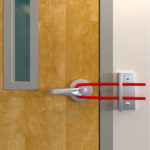
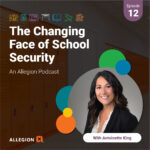
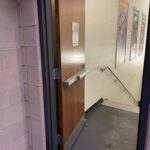
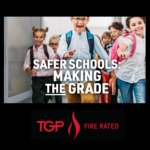

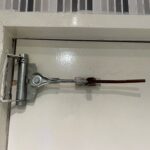
I participated on the live view and it is very good